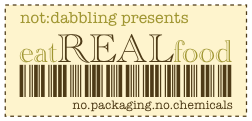And just like that Elderberry season is gone! It’s time to move onward in our winemaking extravaganza, for it’s now the season for Possum Grapes. These tiny, buckshot-sized, purple grapes are mostly seed. They grow wild and can engulf entire trees in a season. Most people will cut them back before they have the chance to produce fruit, but if you’re like me you can’t resist any chance to harvest something wild (or free!). Many people confuse Muscadines (larger and bronze when ripe) with Possum grapes (small and purple when ripe), but one you identify one, the difference will be obvious.
If you’ve read any of my other winemaking posts, feel free to scroll down to the actual recipe. If you’re new to winemaking be sure to read over some of these helpful hints and explanations before moving forward.
Country Wine: Equipment and Ingredients
It is possible to make wine with minimum equipment and purchases. The bare necessities (in my humble experience) that you’ll want include:
- Food-grade bucket, preferably 5-gallon. Check with a local bakery or deli.
- A large strainer or sieve plus some cheesecloth.
- About 4-5 feet of food-grade tubing. Look in the plumbing section of a hardware store.
- Gallon-sized glass carboys or 5-gallon collapsible water cubes. Carboys can be saved from juice purchases. The water cubes are fantastic for making odd-sized batches of wine and can be found at camping supply stores.
- Balloons and cotton balls, or airlocks.
- Yeast. You can use regular baking yeast, but if you want a better flavor you can opt for different “wine” strains of yeast found at winemaking/brewing stores. I’ve used Montrachet as it’s recommended to balance the flavors of berry wines.
- Bottles and Corks. I save all my bottles from other purchases like wine, vinegar, juice, and so on. I purchased “mushroom” corks since they don’t require a tool to insert them into the bottles.
Optional:
- Campden tablets to sterilize equipment, remove stray yeast and bacteria (highly recommended unless you have problems with sulfites).
- Tannin, citric acid, or Earle Grey tea for flavor balance in sweeter wines.
- Extra sugar or wine conditioner to sweeten and brighten finished wine.
- Pectic acid for removing extra pectin and “clarify” wine.
- Yeast nutrient to feed yeast. Recipes without nutrient require extra sugar.
You can purchase all of these items from a wine and beer making supplier or spend a little more energy and locate many things locally. I purchased my airlock, water cube, yeast, campden tablets, and corks from E.C. Kraus. for less than $50. The rest I found locally or did without.
Possum Grape (Wild Grape) Wine
I altered this recipe based on my purposes, though it’s roughly based on one I found at Wildfoods.info. I highly recommend that you read that entire article before proceeding here. I honestly could not give anywhere near the amount of fabulous information that is offered.
- 1 gallon wild grapes with vine will make about 1 bottle of wine. Multiply recipe as needed.
- 1 gallon Possum Grapes
- 1/3 lb granulated sugar
- 1 campden tablet (1 tablet is good for up to 1 gallon of liquid. One tablet should be enough for up to 3 gallons of grapes)
- 1 tsp yeast
- Wash grapes. Wrap fruit in cheesecloth or muslin and squeeze as much juice as possible. Alternately you could crush them in a china cap with a dowel, but avoid crushing the seeds. Strain fruit overnight. Add one campden tablet before completing this portion.
- The next day, add sugar and yeast and mix well. Cap holding container (glass bottle, carboy, watercube) with airlock. *We are very prone to mold and mildews thanks to our humidity. If you have a drier season and desire a more natural wine, you can omit the campden tablet and yeast altogether. Prior to airlocking your wine, allow it to capture a wild yeast. You’ll know you’ve captured one when you see your wine bubbling and have no signs of bacteria. When it begins to bubble you can close your container with your airlock.
- When the wine stops bubbling you can siphon off the liquid from any sediment with your tubing. Siphon the wine into your sterile bottles and cork. Allow to rest about 6 months before consuming.
Possum Grape (Wild Grape) Jelly
- 1 gallon fruit, stemmed
- Juice of 1 lemon
- 5-1/2 cup sugar
- Pectin if desired
- Wash grapes. Pour 1 quart boiling water over fruit. Wrap fruit in cheesecloth or muslin and squeeze as much juice as possible. Alternately you could crush them in a china cap with a dowel, but avoid crushing the seeds. Strain fruit overnight.
- Take four cups of grape juice and mix with remaining ingredients. Bring quickly to soft-ball stage and skim any foam before pouring into sterilized canning jars.
- Let boil in hot water bath for 15 minutes.
- Check seals on lids before putting jars in storage.
Ta daa! You have scrumdillyumptious homemade grape jelly and wine for the price of sugar and some easy pickin’.




















